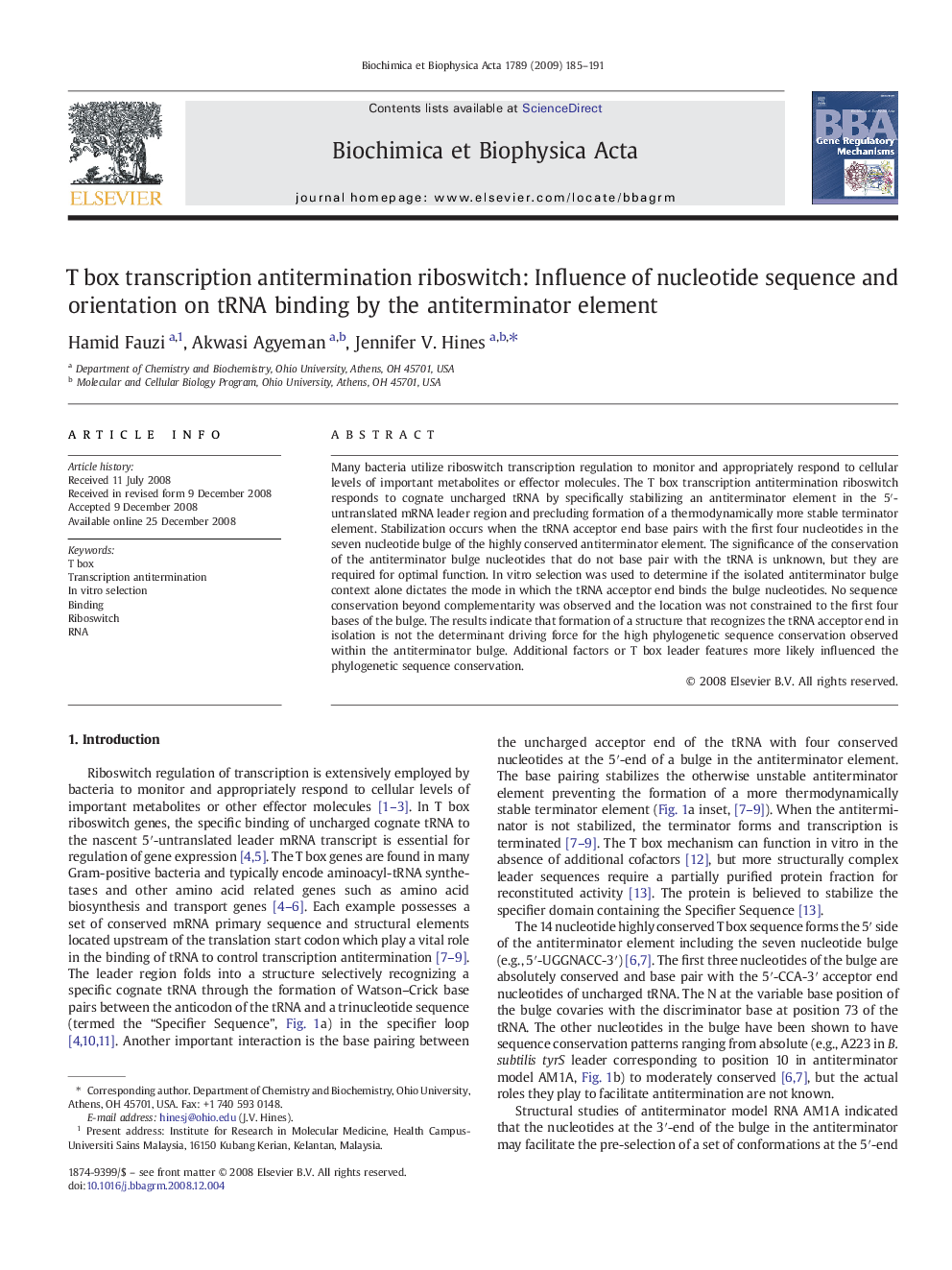| Article ID | Journal | Published Year | Pages | File Type |
|---|---|---|---|---|
| 1946886 | Biochimica et Biophysica Acta (BBA) - Gene Regulatory Mechanisms | 2009 | 7 Pages |
Many bacteria utilize riboswitch transcription regulation to monitor and appropriately respond to cellular levels of important metabolites or effector molecules. The T box transcription antitermination riboswitch responds to cognate uncharged tRNA by specifically stabilizing an antiterminator element in the 5′-untranslated mRNA leader region and precluding formation of a thermodynamically more stable terminator element. Stabilization occurs when the tRNA acceptor end base pairs with the first four nucleotides in the seven nucleotide bulge of the highly conserved antiterminator element. The significance of the conservation of the antiterminator bulge nucleotides that do not base pair with the tRNA is unknown, but they are required for optimal function. In vitro selection was used to determine if the isolated antiterminator bulge context alone dictates the mode in which the tRNA acceptor end binds the bulge nucleotides. No sequence conservation beyond complementarity was observed and the location was not constrained to the first four bases of the bulge. The results indicate that formation of a structure that recognizes the tRNA acceptor end in isolation is not the determinant driving force for the high phylogenetic sequence conservation observed within the antiterminator bulge. Additional factors or T box leader features more likely influenced the phylogenetic sequence conservation.
